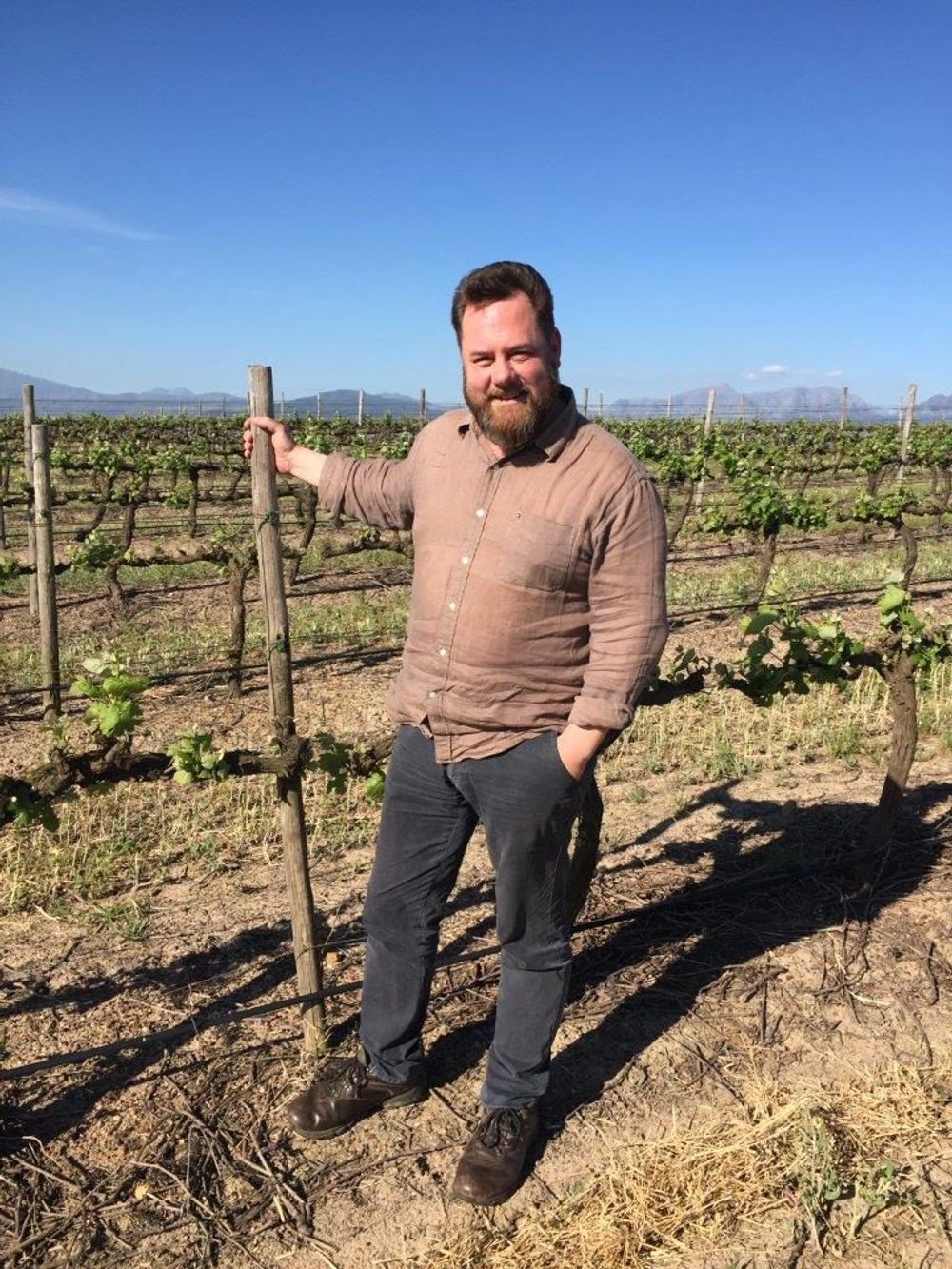By understanding their winemaking roots, South Africa’s new generation of winemakers are making modern wines from old vines. Many of which were on show at today’s Wines of South Africa tasting.

Andre Morgenthal is looking to lead the growing initiative in South Africa to safeguard vines aged 35 years and older
In Stellenbosch you’ll find two men with a mission- a mission to safeguard South Africa’s ’s heritage of old vines. Armed only with secateurs and laptops, they face a huge challenge. Genial Andre Morgenthal, who spent 15 years at Wines of South Africa, and Jaco Engelbrecht, a young, dynamic, tech-savvy viticulturist, are the team tasked with managing The Old Vine Project and getting the South African wine industry behind it.
With generous seed funding from businessman and winery owner Johann Rupert and the legendary viticulturist Rosa Kruger as one of the directors, The Old Vine Project (a newly launched not for profit, public benefit organisation) is beginning to take shape.
The objective is to preserve the South African vineyards that are 35 years of age and older through sustainable trading. There are currently 2,621 hectares of vineyards that are this age, but only an estimated 7% have been identified and resuscitated and result in an identifiable wine brand. The rest are all under threat of being pulled up. “There’s a long way to go”, admits Morgenthal.
Wines made from very old vineyards have been huge drivers in changing the international perception of South African wine as a whole, so they play a disproportionately important role in its future. Winemakers such as Eben Sadie and his Old Vineyard series and Chris Alheit’s Cartology and Radio Lazarus have provided the spark for many more brands that have got the critics and the drinkers raving. You only have to think of the old vine series from Ian Naudé, David and Nadia Sadie, Adi Badenhorst, DGB, and Mullineux.

Eben Sadie has been at the forefront of using old vines in his winemaking
Sadie, in particular, has been seen as one of the most leading winemakers in working with old vines. He worked closely, for example, with Rosa Kruger to identify and find old vines including Chenin Blanc, Semillon Gris, Semillon Blanc, Palomino and Muscat for whites and Cinsault, Grenache and Tinta Barroca for reds which have become the backbone of his Old Vineyard series which have old vines on the map since they were introduced in 2009.
And there are more superb quality wines coming to the trade every year.
Unique characteristics
Morgenthal explains that all these wines, even though they are so different, have the weight, the mouth feel and the denser texture that is characteristic of wines from all old vineyards everywhere in the world.
South Africa has 39 varieties in its list of old vineyards and that is pretty unusual. The biggest variety is Chenin Blanc at 52%, with Cinsault and Pinotage at 5%, Palamino at 4% and Sauvignon Blanc, Semillon, Syrah and Tinta Barocca next in the rankings.

Viticulturist Jaco Engelbrecht specialises in understanding old vines
These are mostly bush vines and most are not irrigated. Engelbrecht, who has specialised in the rehabilitation of old vineyards, is looking to carry out specific research in to identifying what it is that has made these specific vines survive. What is it that has allowed these vines to stand all these years in the same soil throughout all the differing seasons. But equally they are not the vines they once were – their DNA has changed slightly.
In a country where many vineyards are plagued by leaf roll virus, and yields start to plummet at between 15 and 20 years old, growers often look to replace vines at this time. Morgenthal says part of the role of the Old Vine Project is not only to rescue the existing old vines, but also persuade farmers to protect existing vines so that they will become the old vineyards of the future.
Paying to survive
But how are they going to do this? As with everything, it is all about money and investment. Growers need to be rewarded properly; keeping low yielding vineyards has to be financially viable.For old vineyards with yields of a mere two or less tons, this means that buyers must pay a minimum of R10,000 per ton. Winemakers like Sadie and Alheit already pay well above this.

The Old Vine Project would not be possible without the passion, knowledge and support of Rosa Kruger
So what is involved in rescuing an old vine? “Well”, says Morgenthal, “Rosa Kruger says the answer lies in thinking of them as very old people. They need to be treated with great respect, pruned gently and fed carefully. Sometimes a little interplanting of young vines will relieve their boredom and keep them active.’
“For Rosa the old vines project has been a labour of love for over 10 years, so she has seen the exceptional results of a little TLC given to these golden oldies.”
The oldest vine in South Africa is in Heritage Square in the centre of Cape Town. A Crouchen Blanc that dates back to around 1771. Very few vines will survive nearly 250 years but, with the Old Vines Project in the hands of Morgenthal and Engelbrecht , South African vineyards may have a fighting chance of reaching their half century.
- For more information email Andre at andre@andremorgenthal.com.
- The current website www.iamold.co.za explaining the project is being revamped and will be relaunched later this year.
































